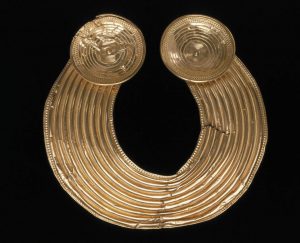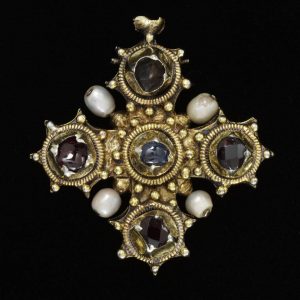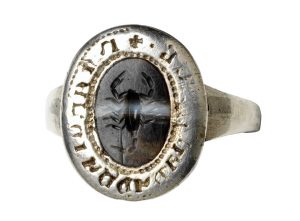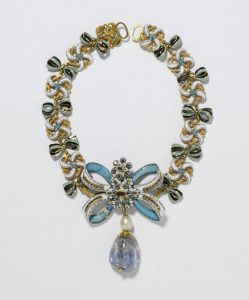Totally, during history, jewelry have been made of many different kind of metal such as shells, stone, and c, survived from prehistoric times. Obviously, one the usage of jewelry back in history was protection from the danger of life or as a mark of status or rank. In development of the art of jewelry the discovering of the stage of metal was really important, over time the c became more sophisticated, interacting decoration became more popular. Traditions were bold enough to bury some valued ornaments with the dead so as to accompany its owned and metal was more valuable than golds on those days. Tombs and hoards are the places that much jewelry comes from. As you can see in the picture this collar has been found folded in half in a bog in Shannon grove, co. limerick, Ireland, back in 1783, the usage of it is not really velar but probably it used as ceremonial collar under the each of the circular terminals, there is a hole that probably used to carry a chain to hang the collar over the neck.
MEDEIVAL JEWELRY 1200_1500
Gold, silver and precious gems were worn by royalty and nobility; copper or pewter were the lower level metals which used to use by lower level ancient people. The color which provided precious gems and enamels were their favorite part, they used to believe that some gems have power to protect them from harm.
Gems, back in century used to be polished rather than cut, the value of gems were determined by their size and lustrous to color gem’s design on jewelry, ground glasses fired at high temperature onto a metal surface, the techniques of those days are still useful nowadays.
In the medieval period the images which decorating the back of their cross were used as a focus for meditation.
There was some scene on the lid which were used during the crucifixion such as scourge, whip, lance, sponge, and nail, and pearls symbolized purity, and red gems symbolized sacrificial blood shed by Christ.
RENAISSANCE JEWELRY:
Splendor jewels were the symbol of this period, enamels became more popular and the glitter of stone were increase by advance in cutting techniques, religion rolled a really important play in everyday life, many jewelries were worn as a display of political strength.
The new found interest in classical world had straight reflection on the design.
This scorpion etching dates from the 2nd or 1st century BC but has been reused in medieval ring.
Scorpion had a protective amulet, it was believed to heel patients, it was associated with water so it could have had cooling reflection on fever. Also it’s a zodiac symbol.
17TH CENTURY JEWELRY
The style of jewelry and their design by the 17th century changed, the new softer pastel shades become more popular for gemstones and pearls, breast ornaments were well known and particularly placed on stiff dress fabric. The bow motif, and botanical ornament rolled an important play on those days, this striking color combination is a perfect symbol of jewelry design on 17th century.




